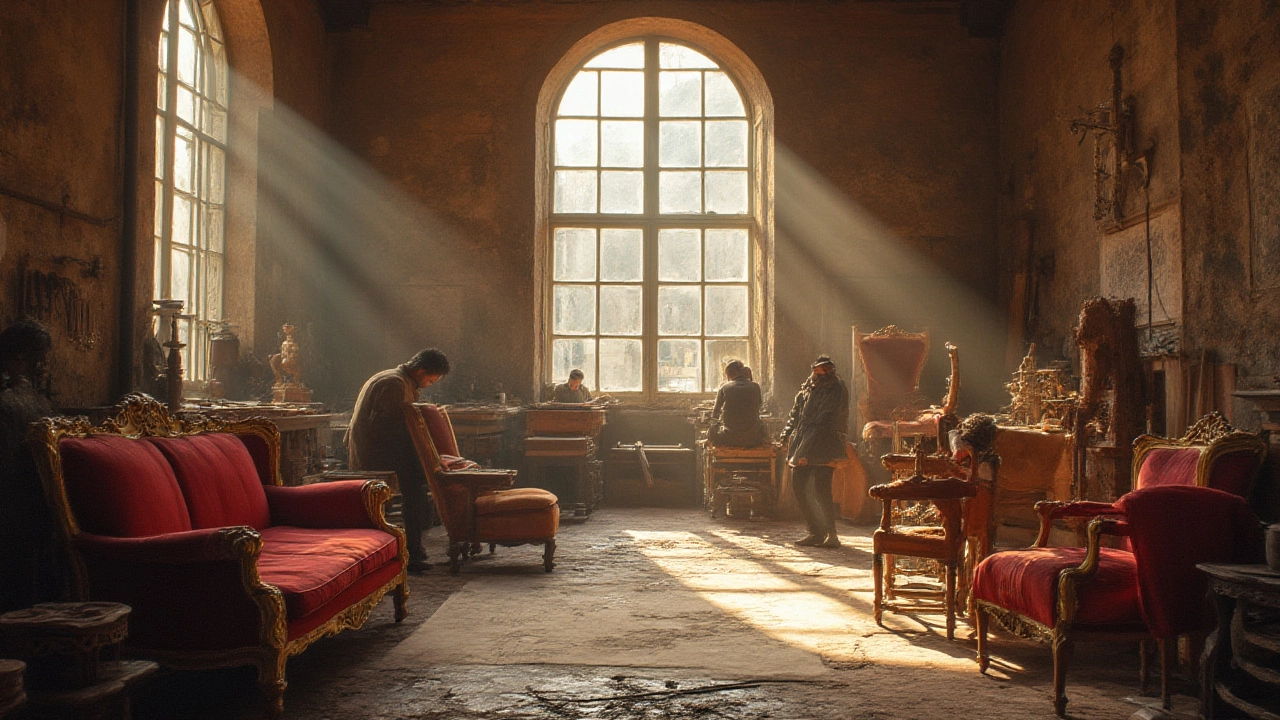Best Furniture Makers: Global Leaders in Quality and Craftsmanship

If you’ve ever browsed expensive showrooms or lost hours scrolling Pinterest for your dream living room, you might’ve wondered—who actually makes the best furniture in the world? It’s not just about price tags or shiny finishes. The true greats blend history, innovation, and materials, staying ahead of trends without losing that solid, undeniable quality. But let’s call it what it is: finding the right piece is a modern treasure hunt, filled with hype, legendary names, and more than a few over-priced duds.
The Legends: Classic Names That Set the Standard
When most people think of "best furniture," their minds drift to familiar European names—and there’s a reason. Italy’s Poltrona Frau and Switzerland’s de Sede have turned leather work into an art form, combining centuries-old techniques with fresh, contemporary designs. Each Poltrona Frau chair takes more than 30 hours just for the leatherworking alone, and all the hides are hand-picked—there’s zero room for shortcuts. Scandinavian makers like Carl Hansen & Søn and Fritz Hansen hold their own with minimalist style and ethical material sourcing. If you’ve ever sat in an Egg Chair designed by Arne Jacobsen for Fritz Hansen, you can feel the craft in every contour—it’s not just a pretty shape. Some of these heritage brands guard their methods like family secrets, which has only fueled their mystique. Japan’s Maruni and the UK’s Ercol prove that blending strict attention to detail with innovative ideas works across the globe. A surprising fact for anyone: Ercol was one of the first major furniture companies to use steam-bending, a technique that creates those perfect, sweeping arcs found in their classic Windsor chairs. You get a piece of history with every purchase. These legends don’t just rest on their past; they constantly retool designs to fit changing homes without losing what made them iconic to begin with.
What Makes the “Best” the Best? Materials, Techniques, and Design Philosophy
The difference lies deep in the details. First off, the materials: premium furniture makers don’t just grab wood from the nearest mill or use cheap screws. For example, Christian Liaigre out of Paris uses French oak aged for decades, while Dutch artisans at Piet Hein Eek specialize in reclaimed, weathered woods to create eye-popping one-offs. As for metals, Herman Miller sources precise aluminum blends that stand the test of time. Here’s the big secret: every stitch, join, and polish happens under the gaze of craftspeople who obsess over the finish. Handmade furniture comes with subtle, human touches—slightly irregular stitches, invisible joints, wood grains that line up just right. An insider tip: check the back or underside of a piece. Great makers are just as fussy about what you don’t see. Design philosophy matters just as much. The best stay rooted in usability, comfort, and simplicity—even the showiest pieces still feel effortless. Consistency across collections, easy replacement of parts, and ethical sourcing are more than talking points; they’re the difference between a timeless heirloom and a landfill-bound sofa. As famed designer Charles Eames once said,
“The details are not the details. They make the design.”If you’re hunting for something you’ll care about for decades, this is the kind of behind-the-scenes nerdiness you want.
The New Wave: Modern Icons and Sustainable Innovators
Classic brands might rule in legacy, but a whole crop of modern companies is shaking things up. B&B Italia brings an avant-garde, fashion-forward edge, seamlessly blending fabric, metal, and wood in ways that have architects swooning. Their sofas have become status symbols in creative industries. In Scandinavia, Muuto and Menu are fusing the clean lines of tradition with surprising new textures—think felted wool and powder-coated steel. What’s really refreshing: sustainability is no longer a buzzword. Finnish brand Nikari uses only local, slow-growing hardwoods and crafts each piece to minimize waste, while American favorite Floyd focuses on modular designs that reduce environmental impact and make moving less of a headache. If you ask me, Whiskers the cat has never had a better nap than on our Floyd platform bed—no squeaks, no sags, just purrs. There’s also a huge push toward upcycling. Vitra’s “Tip Ton” chair, for example, uses recycled plastics to produce something both kid-proof and design-forward. Companies like this are showing it’s possible to have eye-catching furniture that ticks the boxes for ethics, durability, and trendiness.
Choosing for Your Home: Tips from a Lifelong Furniture Nerd
With so many options, picking the “best” piece for your own space might feel like a big commitment. So, what actually matters? Here’s what Eleanor and I do when we’re on the hunt. First, skip the impulse buys—good furniture isn’t fast fashion. Test before you invest: sit, lean, wiggle, listen for weird creaks. If you’re buying online, make sure detailed close-up photos and warranty info are at your fingertips. For wood, ask about the source and finish. You want something non-toxic and sustainable, especially if you’ve got kids or pets (Whiskers approves this message). Leather? It should smell rich but not chemical-heavy, and feel soft without being flimsy. Check recyclability or possible repair routes—some brands even offer lifetime restoration. Consider your lifestyle: heavy traffic and kids/pets require tough upholstery. Don’t get swayed by trends alone. Classic lines in neutral colors will outlive fads. And remember: the most expensive isn’t always the best. Smart brands now offer customizable modules—if your space or family grows, your furniture can too. Use demo rooms and customer reviews as a reality check. Life’s too short for wobbly chairs and itchy couches.

Global Standouts and Hidden Gems: Worthy Brands Beyond the Hype
If you’re ready to go all-in, keep an eye out for names that might not show up on the first page of a Google search. Brazil’s Etel Carmona creates pieces that look like living sculptures, combining rare hardwoods with dazzling craftsmanship. Australia’s Jardan is a champion of vibrant, sturdy furniture made from native timbers—each item hand-built to order. In the US, Thos. Moser leads the pack in solid hardwood work—think Shaker with a twist—and every piece gets signed by the maker. Then there’s Roche Bobois of France: the brand’s wild, colorful couches and bookshelves are like functional art installations. Don’t sleep on Morocco’s Soufiane Zarib, where artisans blend metal, wood, and leather in breathtaking ways. These companies prove that top-tier furniture isn’t just for the elite—it’s created in every corner of the world, often by workshops that care more about their craft than their Instagram follower count. When you next visit a design fair or gallery, look for these lesser-knowns. Sometimes you find the perfect piece where you’d least expect it—and those are the stories you love sharing at dinner parties, trust me.